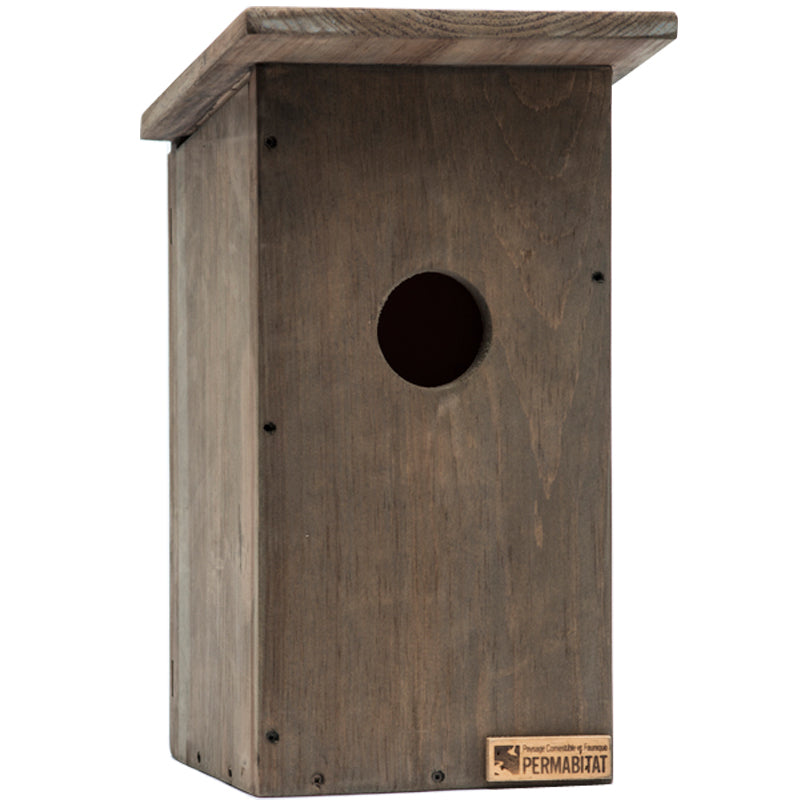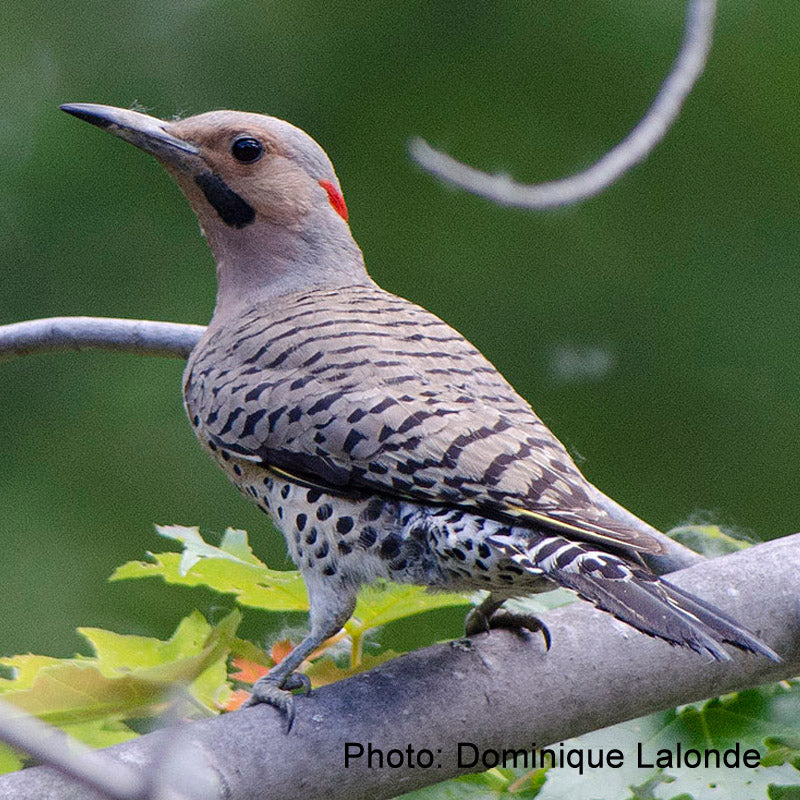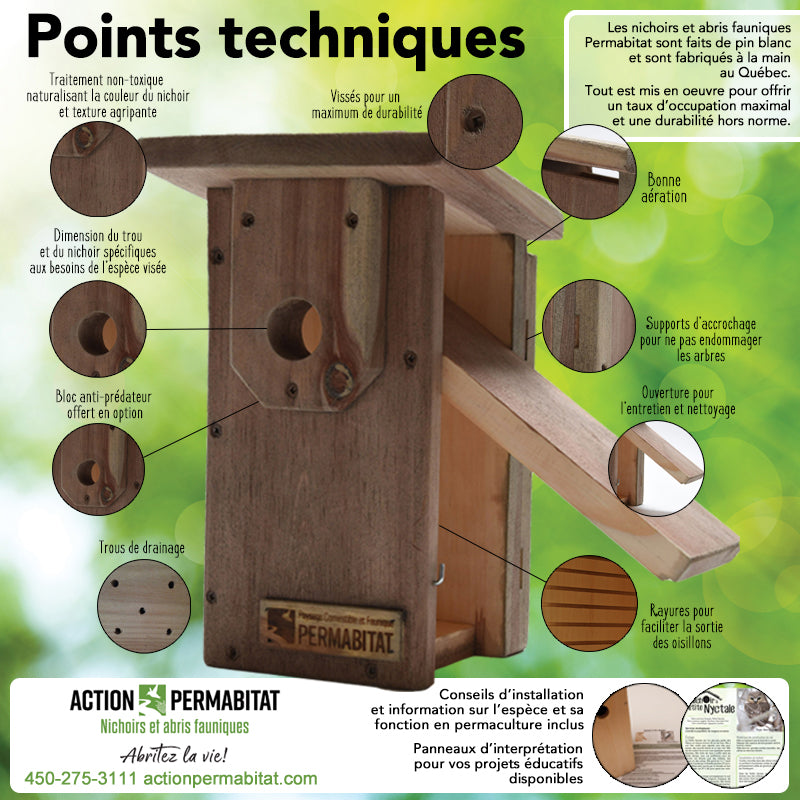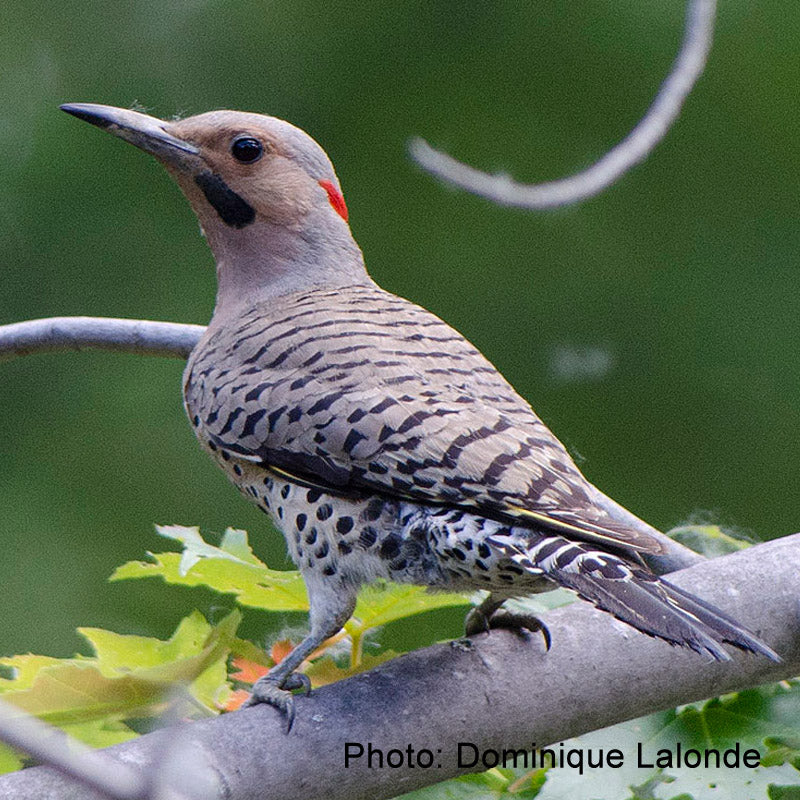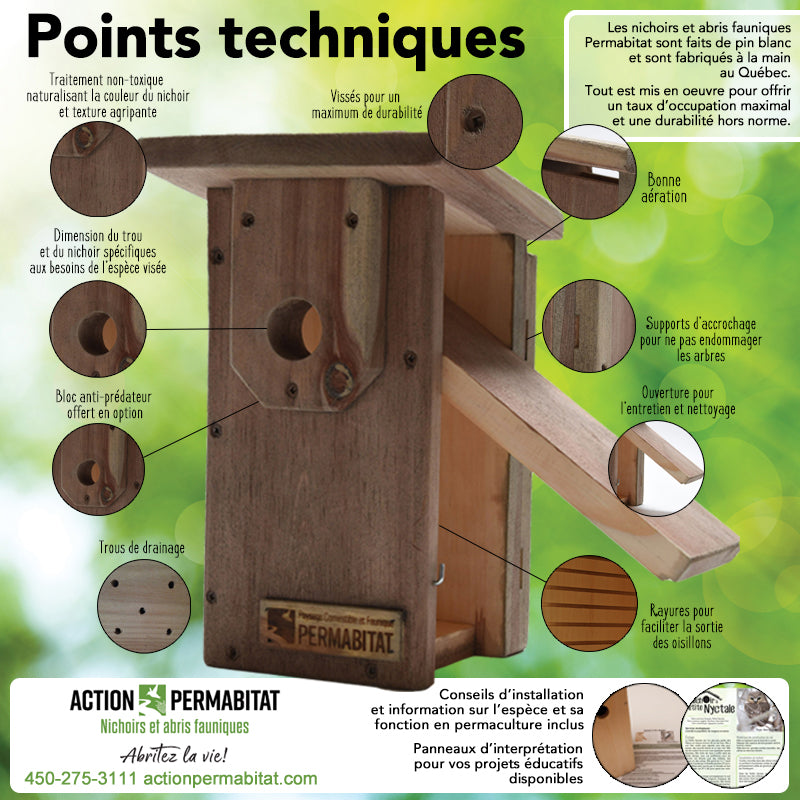1
/
of
3
Northern Flicker Nest Box
Northern Flicker Nest Box
Regular price
$69.99
Regular price
$69.99
Sale price
$69.99
Unit price
/
per
Shipping calculated at checkout.
Couldn't load pickup availability
NORTHERN FLICKER
Colaptes auratus
Unlike other woodpeckers, the northern flicker migrates south during the winter. This beige-colored woodpecker with a white rump, clearly visible in flight, is more often seen on the ground in open environments. It nests from April to August in light woods and in open environments and lays 6 to 8 eggs which are incubated by both parents for 11 to 12 days. The chicks will make their first flight approximately 25 days after hatching.
The northern flicker feeds almost exclusively on the ground and eats mainly ants, but it also consumes larvae and berries. It is recognized as a keystone species in creating cavities used by several other species.
HABITAT
City, countryside, forest and fields.
ECOLOGICAL SERVICES OF THE SPECIES
Eater of harmful insects.
Scatters seeds.
Creator of future habitats.
Scatters seeds.
Creator of future habitats.
FACILITY
Urban, peri-urban and rural areas.
On the edge of forests, small woods and thickets, bushes, groves and orchards. Near suburban or country homes offering a combination of trees and open space.
Mixed or coniferous forests.
Orientation of the hole: south, southeast.
Height: 2 to 6 meters from the ground.
Orientation of the hole: south, southeast.
Height: 2 to 6 meters from the ground.
PRECAUTIONS
_ Carry out maintenance every fall to avoid pests and diseases
_ Do not drive screws or drive nails directly into trees.
